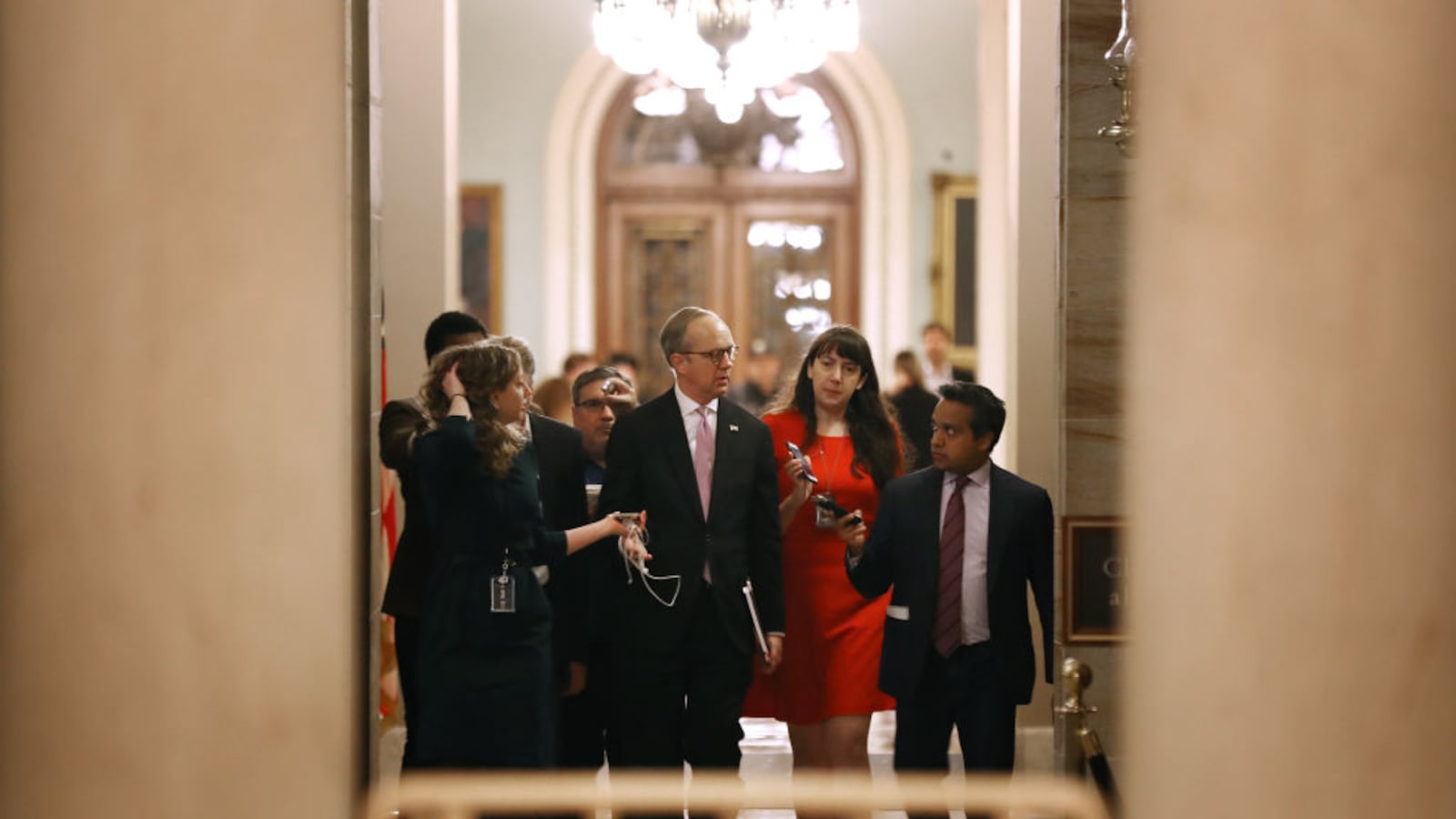A stimulus bill designed to blunt the economic impact of the coronavirus is moving closer to becoming law. If it does, it will mean billions for school districts, with more money going to states and schools with more low-income students.
The Senate voted late Wednesday on a bill that President Trump has said he’ll sign. The House is expected to vote on that bill Friday.
The bill includes significant sums for schools. The biggest chunk: $13.5 billion to be distributed among states, which would have to pass most of that on to school districts and charter schools for needs like buying technology to get remote learning off the ground, sanitizing school buildings, and paying for summer learning programs.
School districts could also receive some of another $3 billion distributed to governors. And another $8.8 billion would be directed to child nutrition, including school meals.
Some education advocates quickly praised the legislation. “States are facing mounting costs in dealing with this unprecedented crisis,” Carissa Moffat Miller, executive director of the Council of Chief State School Officers, said in a statement. “We applaud Congress for reaching a bipartisan solution that provides historic levels of emergency funding.”
Others praised the extra money, but warned that with a recession looming it should be seen as just a start. “As revenues decline and state and local governments’ budgets suffer, Congress must help prevent dramatic cuts from hitting our schools,” said National Education Association president Lily Eskelsen García in a statement. “Congress must understand that tens of billions dollars more will be needed going forward to truly support all students, counter the learning loss happening through school closures and prevent educator layoffs.”The bill also includes language allowing Education Secretary Betsy DeVos to waive parts of the federal education law.
Here’s what we know about what this means for schools.
🔗Who’s getting money for education?
For the $13.5 billion to states and school districts:
- Each state’s share will be determined by how much money it currently gets through Title I — meaning states with more low-income students will get more money. States will divide that money up among districts and charter schools the same way, with districts and schools that get more Title I funding getting more coronavirus relief funding.
- States must give at least 90% of the money they receive to districts. State education departments could choose to spend the rest themselves, including through “grants or contracts.”
For the $3 billion to governors:
- Each state’s share will be determined by its population of children and young people. Then governors decide where the money goes. Their choices: school districts deemed “most significantly impacted by coronavirus,” colleges and universities, or any other school district or “education related entity,” including those providing child care and early childhood education.
🔗What will schools be able to spend money on?
Districts will be able to use their portion of the $13.5 billion on a wide variety of things, including:
- Supplies for cleaning and sanitizing schools and school district buildings
- Efforts to help students from low-income families, students with disabilities, English learners, “racial and ethnic minorities,” homeless students, and students in foster care
- Coordinating long-term school closures, including meals, technology, and serving students with disabilities
- Buying technology, including connectivity, to help students continue learning, including adaptive equipment for students with disabilities
- Items principals need “to address the needs of their individual schools”
- Mental health services
- Planning and providing in-person or online summer learning programs and after-school programs
- Continuing to provide district-level services and employ staffers
🔗What new authority does this grant Education Secretary Betsy DeVos?
The law codifies the education secretary’s ability to waive parts of the federal education law requiring testing and identification of low-performing schools.
DeVos has already said states can cancel testing this year and introduced a streamlined process for states to request waivers. States that get such waivers will have to hold constant its list of schools considered low-performing.
The bill says explicitly, though, that DeVos cannot waive any provisions pertaining to civil rights.
🔗What about the Individuals with Disabilities Education Act?
The bill does not give DeVos authority to waive any part of IDEA, but it does take a small step in that direction. DeVos is tasked with preparing a report within a month in which she offers recommendations for additional flexibility under various federal laws, including the Individuals with Disabilities Education Act.
Recently, DeVos has issued guidance reiterating that schools must comply with IDEA as they move to remote instruction. The department has also emphasized that IDEA shouldn’t stop schools from providing any instruction at all.
Some school leaders are still skittish, though, saying it’s challenging or even impossible to fully meet students’ needs remotely. Existing guidance “is not nearly enough,” Wesley Smith, who leads an association of California school administrators, told EdSource. “We need explicit waivers of explicit provisions.”
But critics say even starting down this path could be dangerous.
“IDEA was created because people said ‘we can’t do it’ for a laundry list of reasons. And IDEA clearly says ‘but you have to,’” Wendy Tucker of the National Center for Special Education in Charter Schools said earlier this week. “Instead of rolling back civil rights, we need to roll up our sleeves and get to work.”


